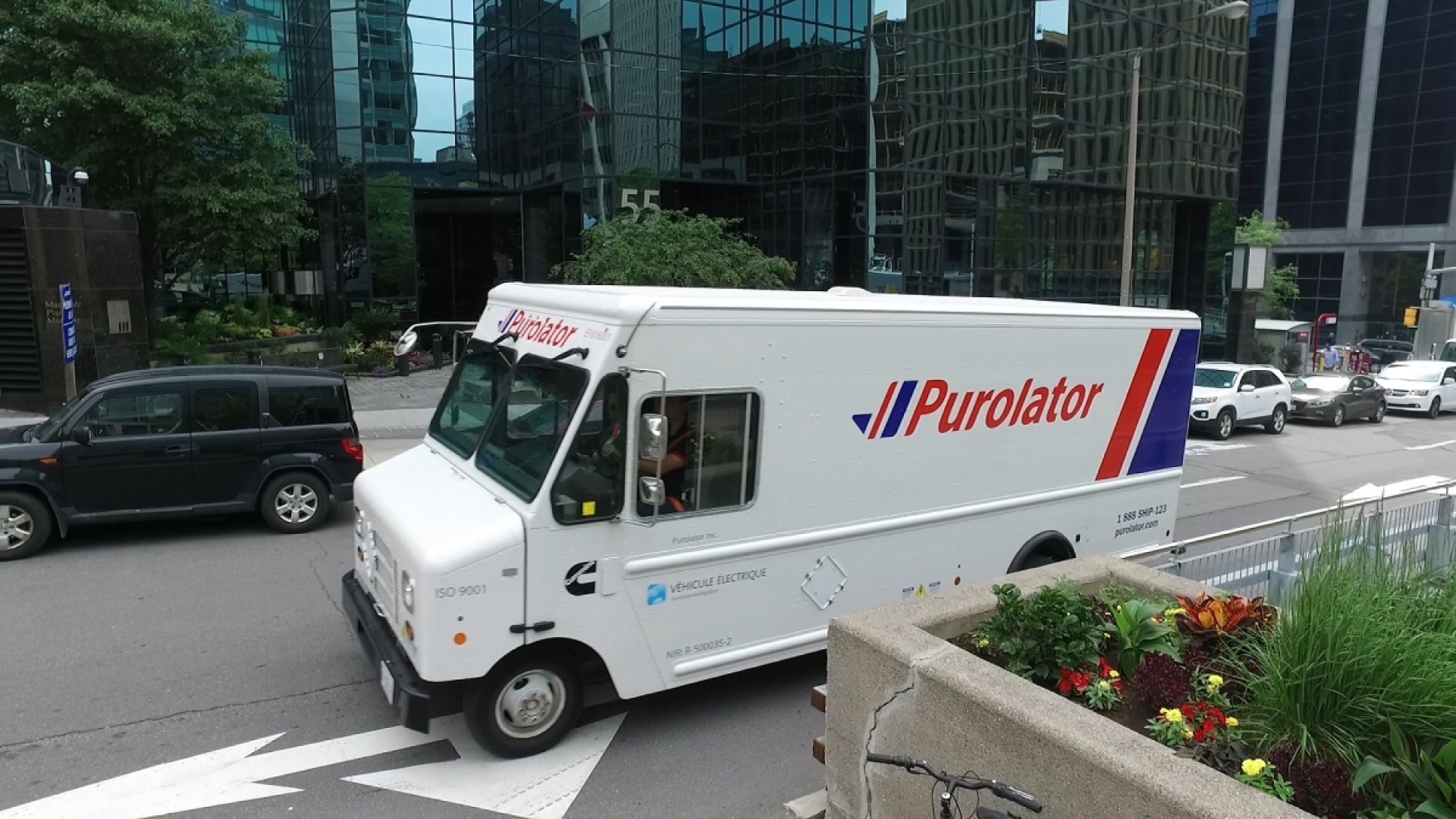Cummins Partners with Purolator to Deliver on the Promise of Electrification
Purolator Courier Alexis Picard says it’s been cool to drive the all-electric test truck this summer that’s part of a joint project involving the Canadian package delivery company and Cummins.

First, there is less heat in the cab, which has been nice on warm days in Ottawa. But he's especially enjoyed the surprise on many of his customers' faces when he pulls up to deliver something.
"People are expressing excitement toward me driving the vehicle," Picard said. "But more people, I would say, are shocked when they see me driving a vehicle that doesn't make any noise and they hear my sound system over the engine.
“It’s a bit of a nice feeling,” he adds with a smile.
The unassuming "VÉHICULE ÉLECTRIQUE" could be an important bridge to the low-carbon future both companies want. Having experimented with various forms of low carbon energy for much of the past decade, Purolator is looking for a powertrain that can realistically replace combustion engines in urban areas.
"It's not just our customers but our employees who are pushing for change," said Serge Viola, Purolator's Director of Asset Management. "But any change must be reliable under all conditions. Our customers expect their packages will be delivered on time. That's our business."
For Cummins, the test truck is a chance to learn more about electrification, building on its wealth of experience in hybrid-electric engines as the company establishes a new Electrified Power business. Cummins wants to offer customers a broad product portfolio - including clean diesel, natural gas, hybrids and electrification - so they can choose what works best for them.
"Partnering with Purolator enabled us to be at the forefront of innovation and accelerate our learnings in the field," said Julie Furber, Executive Director - Electrified Power at Cummins. "We have worked closely with Purolator on customer requirements to design and integrate the powertrain into this vehicle. We look forward to using our learnings on new development opportunities."

KEY CHALLENGES
Purolator has experimented with a variety of approaches to incorporate alternative energy forms into delivery vehicles. The company had a fleet of diesel-electric hybrids, for example, and then experimented with a totally redesigned delivery vehicle that not only used electrified power but also improved driver ergonomics and used space more efficiently. The company even explored hydrogen as an energy source.
But Purolator has never quite found the right combination of technology, reliability and manufacturing muscle in a partner to keep one of Canada’s most extensive transportation and logistics networks rolling in a new way.
For Viola, implementing electrification comes down to three key challenges:
• Can the battery range be sufficient to keep vehicles running on some of Purolator’s longer urban routes?
• Is there a company behind the vehicle with a demonstrated supply chain and service network to produce and service the number of electric vehicles Purolator needs?
• And perhaps most importantly, what happens if the power goes out overnight at one of Purolator’s hubs?
"I don't envision having enough off-the-grid generating power at any one site to charge-up 30 or 40 vehicles," he said. "We have to have a plan even in the unlikely event that the power goes out overnight at one of our facilities."
So far, Purolator has been happy with the test truck, Viola said. But he wants to see how it performs on longer routes and in the coldest part of a Canadian winter.

WHAT’S BEEN LEARNED
Cummins started work on electric powertrains long before the Electrified Power business started earlier this year. The partnership with Purolator, in fact, goes back to 2016. The test truck contains 12 battery modules totaling 62 kilowatt-hours (kWh) of energy. The battery modules can be connected in LEGO-like fashion to store and release the energy that ultimately turns the vehicle's wheels.
The truck has logged about 5,304 km (3,296 miles) in field testing and another 6,000 km (3,728 miles) during development testing. On average, it has run about 35 km (21 miles) per day in temperatures ranging from 10 degrees Celsius (14 degrees Fahrenheit) earlier this year to 30 degrees Celsius (86 Fahrenheit) over the summer.
Viola said the truck has been able to complete its route and get back to the garage for recharging with plenty of power to spare. The company has started putting it on a 70-km route to learn more about its limits.
“Our driver has been a little nervous coming back, but we’ve never had a problem,” he said.
Cummins' plan is to run the test vehicle for 12 full months, gather as much information as possible, and use what is learned in the company's future product offerings. Cummins has pledged to have an all-electric powertrain for urban buses on the market by the end of 2019.
The company is focusing on the urban bus and truck markets initially because that's where it thinks the infrastructure for electrification will develop first. Cummins believes it has the manufacturing expertise and service network to quickly play a leading role in the electrification market.
While pleased with the test so far, Viola is reluctant to predict just when much of Purolator's fleet will be electrified. He's waiting for a partner that can build 300 to 400 trucks and meet the company's key challenges, first.
Includes reporting by Katie Davage, Senior Communications Specialist - Electrified Power
Related Tags